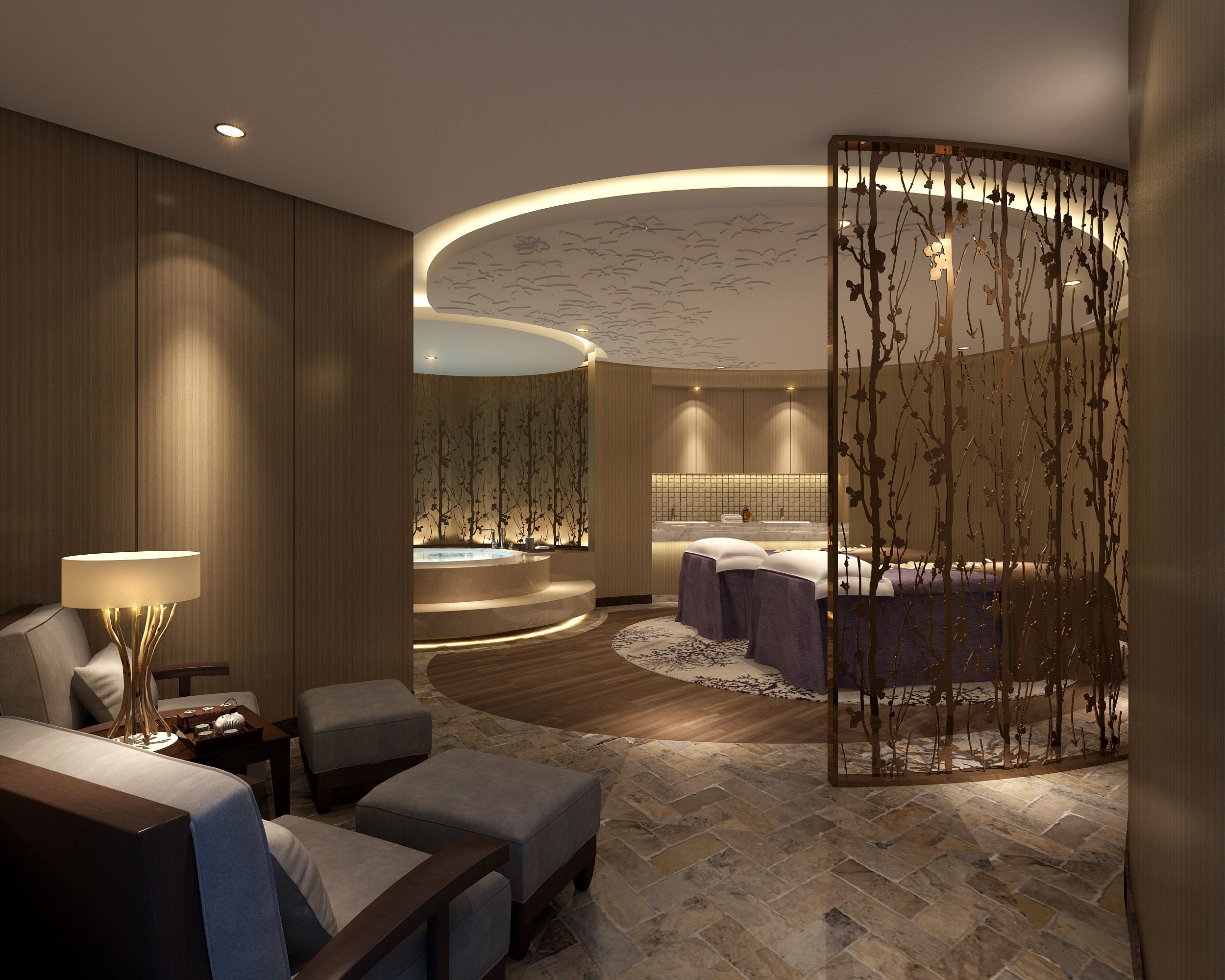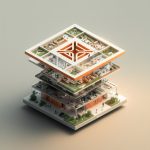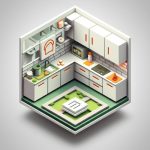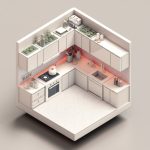Step into the enchanting world of spa interior design, where spaces are meticulously crafted to awaken the senses and soothe the soul. More than just aesthetics, spa interiors artfully blend design principles with psychology to create havens of tranquility and rejuvenation. Discover the power of color, light, and texture, and explore how natural elements and sensory experiences can transform a simple room into a sanctuary for the mind, body, and spirit.
Spa Interior Design: Crafting Escapes for the Senses
A spa visit should be an escape – a chance to disconnect from the outside world and reconnect with oneself. Achieving this sense of tranquility starts with thoughtful interior design.
Imagine being greeted by the soft, earthy tones of wood and stone, the gentle trickle of a water feature whispering in the background. Sunlight, filtered through gauzy curtains, bathes the room in a warm, inviting glow. This is the power of natural elements in spa design. Materials like bamboo, with its organic elegance, and the calming hues of blue, green, and white, work together to create a sanctuary for the senses.
But spa interior design goes beyond aesthetics; it’s about creating a multisensory experience. Picture yourself lying on a massage table, enveloped by the soft glow of dimmable lights, their warmth encouraging you to fully unwind. The air carries the subtle scent of lavender or eucalyptus, their aromas activating the relaxation centers in your brain. These carefully curated elements – light, scent, sound – all play a crucial role in shaping a truly immersive and rejuvenating spa experience.
And let’s not forget about sustainability. Increasingly, spas are embracing eco-friendly practices, incorporating recycled and locally sourced materials without compromising on style. Energy-efficient appliances and lighting, low-VOC paints and finishes – these choices contribute to a healthier environment for everyone.
Technology also has a role to play, enhancing the spa experience in subtle yet significant ways. Touchless entry systems offer convenience and promote hygiene, while smart mirrors provide personalized beauty consultations, taking customization to a whole new level.
Ultimately, creating a successful spa is about thoughtfully considering every detail, from the materials used to the way the lighting makes you feel. By prioritizing serenity and rejuvenation in every design choice, you create a space that truly nourishes both the body and soul.
What is the Psychology Behind Spa Interior Design?
Spa interior design is about more than just creating a relaxing atmosphere; it’s about understanding how our environment impacts our well-being and leveraging those insights to design spaces that rejuvenate us from the inside out.
Let’s delve into the psychology behind some key design elements:
Creating Sensory Harmony: Imagine stepping into a spa and being enveloped by the gentle hues of blue and green, colors scientifically proven to reduce stress. Add to that the delicate aroma of lavender or eucalyptus, known for their calming properties, and the soft sounds of nature or calming melodies, and you begin to understand the power of sensory design.
Mimicking Nature’s Tranquility: Biophilic design – the practice of incorporating natural elements into built environments – is a cornerstone of spa design. Large windows framing lush greenery, the soothing sound of a waterfall, the rough texture of a natural stone wall – these elements tap into our innate connection to nature, fostering a sense of peace and grounding.
Evoking a Sense of Escape: Soft, warm lighting signals to our brains that it’s time to unwind, while the feel of plush textures and natural fabrics invites us to relax and let go. Designated quiet zones provide sanctuaries for reflection, allowing guests to fully disconnect from the outside world.
Empowering Holistic Wellness: Spa design extends beyond relaxation to encompass holistic well-being. Dedicated meditation areas provide spaces for mindfulness and introspection, while yoga studios encourage physical movement and release. Even quiet corners with reflective pools or inviting journals offer opportunities for self-discovery and personal growth.
How Does Spa Interior Design Impact Well-being?
The impact of a well-designed spa environment on our well-being is undeniable. It’s that feeling of instant tranquility that washes over you as you step through the door, the subtle shift in your mood as you’re enveloped by soothing colors and soft lighting.
Sensory Delights: From the moment you enter, a well-designed spa engages your senses in a symphony of relaxation. Soft blues and greens on the walls evoke a sense of calm, while natural wood and stone accents add warmth and grounding energy. Gentle lighting sets the mood, while the sound of trickling water or soft music helps to quiet the mind.
A Breath of Fresh Air: Bringing the Outdoors In: Spas are increasingly incorporating biophilic design principles, integrating natural elements like plants, sunlight, and water features into their spaces. This connection to nature has been shown to reduce stress and promote a sense of well-being.
Technology in Service of Tranquility: While technology might not be the first thing that comes to mind when you think of a spa, it can actually play a significant role in enhancing the experience. Imagine lights that subtly adjust throughout the day, mimicking natural sunlight to support your circadian rhythm, or soundproofing that ensures complete privacy for true relaxation.
Values-Driven Design: The best spas design their spaces with their clients’ well-being at the forefront. They consider the values they want to promote, whether it’s sustainability through eco-friendly materials or a holistic approach to wellness.
Key Elements of Successful Spa Interior Design
Creating a spa that embodies tranquility and rejuvenation requires attention to detail. Here’s a closer look at the elements that can transform a space into a true sanctuary:
Crafting a Sense of Calm
- Color Palette: Opt for a serene and soothing color palette. Soft grays, calming blues, gentle greens, and the classic tranquility of white encourage relaxation. Avoid bright or bold colors that can be stimulating.
- The Dance of Light: Natural light is ideal, so maximize it whenever possible. In the evenings, switch to soft, warm lighting. Think dim and diffused, like the gentle glow of candles.
- A Symphony of Textures: Incorporate soft, natural textures throughout your spa. Plush towels, smooth bamboo surfaces, cozy linen drapes, and the warmth of natural wood all contribute to a sense of luxurious comfort.
Bringing the Outdoors In: Natural Elements and Sensory Delights
- The Greenery Effect: Plants purify the air and add a touch of life to any space. Choose plants known for their calming properties, like lavender, chamomile, or aloe vera.
- The Soothing Sounds of Water: Incorporate a water feature into your design, whether it’s a small fountain, a wall-mounted waterfall, or a simple bowl with candles and flower petals. The gentle sound of water is incredibly soothing.
- Aromatherapy Wonders: Diffuse calming scents like lavender, chamomile, or ylang-ylang to create a truly immersive sensory experience.
Furnishing Your Oasis: Comfort and Flow
- Comfort is King (or Queen): Invest in comfortable, high-quality furniture designed for relaxation – plush lounge chairs, supportive recliners, and massage tables that provide the right amount of cushioning.
- Ergonomics Matter: Choose furniture that’s ergonomically designed to prevent aches and pains so your clients can fully relax.
- Creating a Seamless Flow: The layout of your spa should encourage a sense of calm and ease. Avoid clutter and ensure a clear and intuitive flow between different areas.
By thoughtfully incorporating these design elements, you can create a spa that is not only aesthetically pleasing but also promotes a profound sense of well-being. Discover more about creating harmonious spaces with our resources on natural interior design and elevate your design knowledge with The Interior Design Handbook.
- Decorative Wall Tiles for Kitchen: Stylish Design Ideas - November 29, 2025
- Decorative Wall Tiles: Style Your Home with Unique Designs - November 28, 2025
- Best Color Backsplash For White Cabinets: Ideas Youll Love - November 27, 2025










